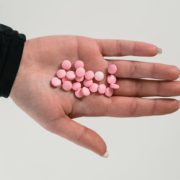There are many pollutants in the air we breathe inside our homes and offices. We may or may not be aware of their presence, but these pollutants are equally as dangerous as outdoor pollutants. They even cause indoor air pollution, a concern that we should all be aware of. It is important to know how these pollutants can be prevented and what we can do to maintain clean air in our homes and workplaces.
What are Indoor air pollutants?
Indoor air pollutants are any chemical, physical or biological substance that is present in indoor air. These pollutants have been linked to adverse health effects in humans and animals.
Indoor air pollution is caused by a wide range of sources, such as building materials, furnishings, and other products, as well as tobacco smoke, mold, dust mites, and pet dander. However, the term “indoor air pollution” is most often used to refer to airborne particulate matter (PM) produced by human activities such as cooking or burning fuels. Some common indoor air pollutants include:
Volatile Organic Compounds (VOCs)
Volatile organic compounds (VOCs) are chemicals that evaporate at room temperature into the air. They come from many sources, including paints, cleaning products, carpets, adhesives, furniture, and building materials. Some VOCs are considered toxic or hazardous because they can irritate your eyes, nose, and throat when inhaled in large quantities over time. Other VOCs may have long-term effects on your health that aren’t yet fully understood.
Carbon Monoxide (CO)
This colorless, odorless gas is produced by incomplete burning of fuel such as natural gas, gasoline, or kerosene. It can build up in homes if appliances aren’t working properly or if there isn’t enough fresh air coming into the home to carry away CO.
Mold Spores
Indoor mold spores are microscopic fungi that grow on wet surfaces in damp environments such as basements or bathrooms. Indoor mold spores are sometimes found in homes with high humidity levels caused by improper ventilation or leaky roofs/walls/windows office cleaning Sydney.
Formaldehyde
Formaldehyde (HCHO) is a colorless chemical with a pungent smell that is often used as a preservative in construction materials such as plywood, particleboard, cabinets, and countertops made with synthetic materials or composite wood products.
Radon
Radon, a naturally-occurring radioactive gas, comes from the earth. It can cause cancer. If you breathe air that contains radon, it can damage your lungs and cause lung cancer. Radon gas can find its way into your home through cracks in the floor, wall, or foundation. The highest levels of radon are found in homes with basements or slab-on-grade foundations that have cracks in the concrete and are located in areas where there is granite bedrock or shale rock.
Bacteria and Viruses
Indoor air is filled with bacteria and viruses that spread when people sneeze or cough without covering their mouths, touch contaminated surfaces, eat contaminated food or use dirty utensils or toothbrushes. These contaminants can lead to infection and illness if not cleaned properly.
How to prevent indoor air pollutants?
A variety of pollutants can be found in indoor environments, including those from construction materials and furnishings, household cleaning products and personal care products, tobacco smoke, and pets. Here are some tips to help you prevent them.
Vacuum and dust regularly
Vacuuming and dusting remove dust mites and pollen that can trigger allergies. You should also clean vents, registers, and ducts regularly since they are susceptible to accumulating dust and grime over time.
Get rid of pests without using harsh pesticides
Pests such as cockroaches and rodents can bring harmful bacteria into the home, which can cause illnesses like salmonella and E Coli infections. Instead of using harsh pesticides, consider using traps or natural repellents like lemon or peppermint oil around your home’s entry points. In case using pesticides can’t be avoided, make sure they are labeled for indoor use only so they don’t escape into the air when applied outdoors.
Install an AC
Air conditioning can help keep your home comfortable and free from unpleasant odors. If you don’t have an air conditioner, you can have the AC duct installation at a fair price.
This is especially important if you have a pet or someone in the house who smokes. The benefits of having an AC are two-fold: You get to keep your home cool while also avoiding unwanted odors that may linger in your home if you don’t have one installed.
Repair any leaks or other water issues as quickly as feasible
The most common cause of indoor air pollution is moisture damage from plumbing leaks or flooding due to plumbing issues like clogged drains or burst pipes. Water damage can also lead to mold growth in your home’s walls and ceilings — which is not only unsightly but also dangerous for your health since mold spores can trigger allergic reactions and asthma attacks in people who are sensitive to them.
Choose paints, varnishes, and stains that have low or no VOCs
Choose paints, varnishes, and stains that have low or no VOCs (volatile organic compounds) in them. These chemicals can cause eye irritation, headaches, and asthma attacks. If you need to paint a room in your home, use low-VOC paints and stains whenever possible.
Don’t smoke inside your house
Secondhand smoke contains many of the same toxins found in cigarette smoke, including carbon monoxide and formaldehyde. Even if you don’t conduct a fire test on your carpeting or upholstery, you’ll know if there are any lingering odors from smoking by simply taking a whiff before inviting guests over for dinner or drinks.
The more you are aware of air pollutants, the less likely you are to let them affect your life. Air pollution is something most people do not pay attention to, except in cases when things like smog or particulate matter reach dangerous levels. By being aware of air pollutants, you’ll have the chance to prevent them from affecting your life and help others live better as well.







Comments